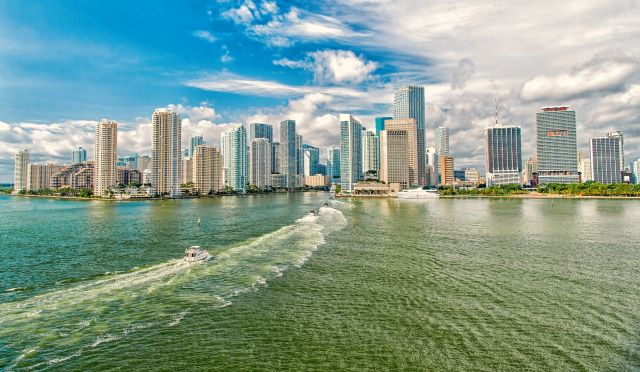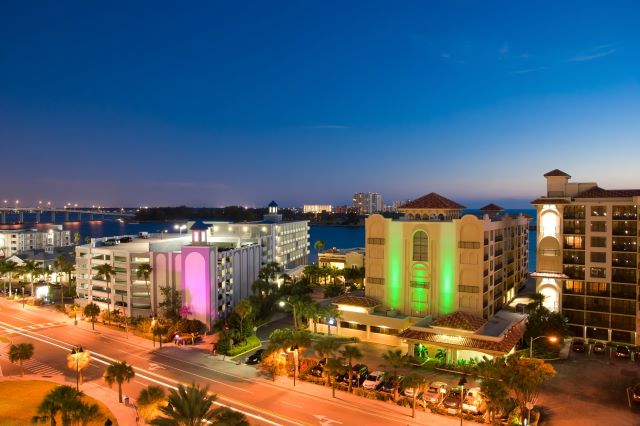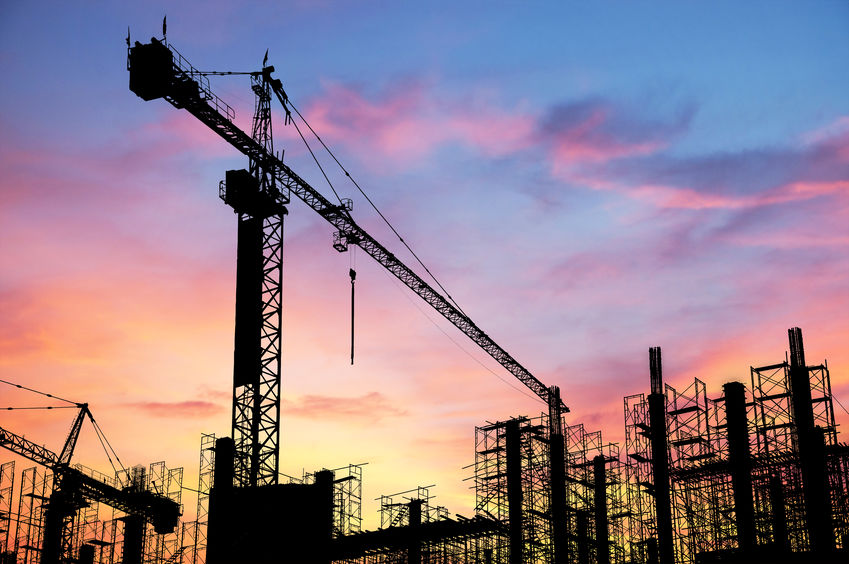
That’s because we’ve uncovered seven hidden costs of building a shipping container home. Any one of these costs could stall or even permanently derail your dream of converting a container into an affordable housing solution.
Even some seasoned home builders of traditional homes have been surprised by some of the “gotcha” expenses that are unique to container homes.
Luckily, a little knowledge and planning beforehand can save you unnecessary expense and headache. Here are seven things you can prepare for to ensure you won’t get caught off-guard.
- Hidden Cost #1: Meeting Your Local Zoning and Permitting Requirements.
- Hidden Cost #2: The High Price of “Cheap” Containers.
- Hidden Cost #3: You Can Spend a Fortune Transporting Your Container Home.
- Hidden Cost #4: Welding Costs Add Up Quickly.
- Hidden Cost #5: Subcontractors Can Bust Your Budget.
- Hidden Cost #6: Proper Insulation is a Must-Have Expense.
- Hidden Cost #7: Your Time — How Much Is It Worth to You?
Hidden Cost #1: Meeting Your Local Zoning and Permitting Requirements.
Before you spend a dime on a container, you’ll want to be certain you understand what is and isn’t allowed in your area.
If you’re thinking about purchasing land to place your container on, you might also want to put this on the back burner until you’ve had a talk with your local planning and permitting departments. And, yes, getting everything in writing would be a good idea as well.
That’s because zoning codes vary from country to country and even region to region within countries. Just because you see photos and building plans online for spectacular container retrofits, don’t assume you’ll be allowed to build a similar home in your area.
To complicate things further, many regions have never permitted shipping container buildings before. If your building department isn’t familiar with this type of construction, you might find your budget and timeline stretched as your local officials figure out what you can and can’t do with your container.
Now the good news is that many city planners are becoming more aware of and educating themselves on container retrofits. We’re already seeing container apartments in large cities like Los Angeles. Over time a lot of zoning and permitting issues should be resolved as container construction becomes more common.
Hidden Cost #2: The High Price of “Cheap” Containers.

Be cautious about buying containers that have made multiple ocean crossings. They can be battered and damaged, making them difficult to retrofit into a home.
Sometimes you’ll see online “deals” for used containers going for a rock bottom $1,500 or $1,000 or less. However, the old saying “you get what you pay for” seems to apply here.
If you buy these containers sight unseen, you might be surprised at what you’re getting once they arrive. At this low price, your container could have made multiple ocean crossings and suffered damage. Repairing that damage could easily negate any savings you thought you were getting.
That’s what happened to New Zealand architectural designer, Melissa Burne. She purchased a used 40-foot container for $1,000 NZD ($684 US dollars). That bargain turned costly when she discovered the container had a damaged roof which cost $10,000 NZD ($6,840 US dollars) to replace.
Burne’s hard-earned advice is to pay a little more at the beginning for a new or almost-new container. “One trip” containers are those that have only made a single ocean crossing. These are generally less expensive and can be in almost new condition.
Whether you buy new or used, you’ll want to inspect your container before you purchase. However, if that’s not possible be sure to get photographs of what you’re buying and buy from a reputable dealer.
You can find a list of dealers from the ISBU Association and the Container Dealers Association (CDA). While we’re not endorsing any of these dealers, these lists give you a starting point. Check out your dealer’s credentials before you purchase.
A few other things for you to consider when buying your container…
- “High-cube” containers measure 9.5 feet tall instead of the standard 8.5 feet tall. Once you add in your ceiling or floor insulation, you might find that a standard container ends up feeling small. While more expensive, high cubes give you an extra foot of height to play with, something some owners feel is worth the expense.
- Shippers frequently treat the flooring of containers with pesticides to protect them from rodents. The paint on containers may also include chemicals that prevent salt water erosion. You may need to take steps (such as replacing the wood flooring) to avoid contaminating your home with harmful chemicals. For this reason alone, some people prefer to pay the extra cost for new containers that have not been treated with harmful substances.
Hidden Cost #3: You Can Spend a Fortune Transporting Your Container Home.
Try to buy your container from a source as close to your building site as possible. While mobile, shipping containers are heavy (an empty 40-footer weighs 8,000 pounds). Containers require expertise and expense to move safely.
That great deal you might be getting on your container can quickly evaporate once you add in the transportation costs if you’re buying from a far-flung source.
Another future expense to keep in mind is the cost of moving your home once construction is complete.
Now for some people this isn’t an issue. They might own the land their home is on and opt for a permanent installation, attaching their home to a foundation. So, for them, there’s no need to add in the extra cost of moving their home once it’s built.
But others prefer the opportunity to “take their home on the road.” Of course, that mobility comes at a cost. If this applies to you, be sure to research how you’ll move your home, whether you’ll be able to do it on your own or if you’ll need to hire someone to help.
Hidden Cost #4: Welding Costs Add Up Quickly.

You might be familiar with the carpenters’ proverb “measure twice, cut once.” This refers to taking care before cutting wood or you might end up wasting time and materials.
Well, that proverb applies to shipping container retrofits in more ways than one.
First, you’ll have the expense of hiring welders to make cuts in your steel containers for doors, windows, skylights and any other openings you might need. If you’re joining and/or stacking two or more containers, you’ll need welders to complete that as well.
But you’ll also need to take care where and how much you cut apart your container. While containers are designed to be super strong to carry heavy loads, cutting can weaken their structural integrity.
You may need to pay for additional steel framing to reinforce your structure and compensate for any cuts you’ve made. This is especially true if you’re planning to stack containers for a multi-story building.
Knowing how much and where to cut can be a challenge for a novice, which is why some people rely on the services of a professional engineer to make these decisions. This can be an unexpected hit to your wallet if you’re not prepared.
Hidden Cost #5: Subcontractors Can Bust Your Budget.
It’s not just welders you’ll need to hire. Even if you’re a talented DIYer who is looking to save money by doing as much work as possible yourself, at some point you might decide that you need the help of a subcontractor or two.
A big reason for this is that you’re working with a non-traditional building material. What worked well for your other home renovation projects may not work as well with a container retrofit. Heating and cooling, sound proofing, roof construction, drainage, electrical and plumbing can offer unique challenges when working with steel.
Some owners have taken a middle approach to handling this dilemma. They pay a professional retrofit company to do the basic rough outfitting of their container, such as plumbing, electrical and insulation. This is generally done offsite in the company’s factory.
When completed, the company ships the containers to the building site. At this point, the homeowner takes over the process of assembling and joining containers, attaching them to their foundation and completing the finishing work. Some owners only do the finishing work themselves, hiring out the assembling and foundation work to contractors.
This middle approach can help keep costs manageable while ensuring that the riskier aspects of a container retrofit are handled by professionals.
Hidden Cost #6: Proper Insulation is a Must-Have Expense.
Depending on the climate where you’re building your home, you just might find yourself roasting in the summer and freezing in the winter if you neglect to insulate properly.
It may be tempting to cut corners with insulation, but most experts caution against this. And you shouldn’t decide how much insulation you’ll need based on what is required for traditionally built homes in your area.
That’s because it’s more challenging to keep the air temperature comfortable inside a steel home than other construction types. You may very well need more insulation than you expected.
Another reason to not cheap out on insulation is that you could end up with condensation problems. Homes that aren’t properly insulated are more susceptible to mold and corrosion, two issues that could jeopardize the comfort and livability of your home.
Discover Containers has a useful guide on ways you can insulate your home, including pros and cons for each option.
Hidden Cost #7: Your Time — How Much Is It Worth to You?

I’ve done my share of DIY home renovation projects and one thing I can say for certain — projects always seem to take longer than what you envision they would at the outset.
I’ve read estimates from some people that say they built their container homes in as little as four weeks. This seems like an optimistic estimate and I’m not certain this includes the time needed for zoning and permitting compliance.
A more realistic estimate for residential projects seems to be in the 3 to 6-month range. And again, the big wild card is how much time you’ll need to get through zoning and permitting.
But how many hours of your time might this boil down to?
Well, I found an interesting quote from Melissa Burne, the New Zealand architectural designer I mentioned earlier. In an interview that appeared in Stuff, Burne said she tracked the time it took to retrofit a single 40-foot container:
“Not including the time taken to get a building permit and resource consent, it has taken well over 250 hours of labor on construction and 180 hours of project management time to get the finished product.”
Now hopefully what you’ve read here hasn’t put a total damper on your enthusiasm to build and live in a shipping container home. That’s certainly not my goal.
However, like any construction project, you need to go into it with realistic expectations and your eyes wide open. That’s the best way to put the odds of success in your favor.
Interested in more info? Be sure to check out our Shipping Container Home Question and Answer Guide.
More News
 6 Neighborhoods for Cheap Rent in San Diego
6 Neighborhoods for Cheap Rent in San Diego
With a median monthly rent of $2,400 for a one-bedroom apartment, San Diego is one of the priciest rental markets in the United States. While … Read More
 7 Neighborhoods for Cheap Rent in San Francisco
7 Neighborhoods for Cheap Rent in San Francisco
The world knows San Francisco as “Golden Gate City.” If you’re trying to rent a one-bedroom apartment at the city’s median rent of $2,995 per … Read More
 10 Neighborhoods for Cheap Rent in Los Angeles
10 Neighborhoods for Cheap Rent in Los Angeles
Home to Hollywood, great weather, the ocean, iconic theme parks, and almost 4 million people, Los Angeles remains one of the most desirable places to … Read More
 7 Neighborhoods for Cheap Rent in Phoenix
7 Neighborhoods for Cheap Rent in Phoenix
Arizona’s capital city, Phoenix, has always attracted college students and retirees. Thanks to recent big tech investments in “The Valley of the Sun,” the land … Read More
 Top 7 Neighborhoods for Cheap Rent in Sacramento
Top 7 Neighborhoods for Cheap Rent in Sacramento
Sacramento is one of the more popular cities in California that is seeing a recent influx in the number of new residents. People from around … Read More
 7 Neighborhoods for Cheap Rent in Tucson
7 Neighborhoods for Cheap Rent in Tucson
As a sprawling metropolis of just over a million residents, Arizona’s second-biggest city, Tucson, has become an attractive destination for an increasingly diverse mix of … Read More
 6 Neighborhoods for Cheap Rent in Miami
6 Neighborhoods for Cheap Rent in Miami
Miami, Florida has seen a massive rise of almost 60 percent more people moving there in 2022 compared to three years earlier. If you’re one … Read More
 6 Neighborhoods for Cheap Rent in Tampa
6 Neighborhoods for Cheap Rent in Tampa
Gorgeous tropical weather in a thriving bayfront city is attracting many people to Tampa, Florida. Tampa also has a strong economy and great entertainment, factors … Read More
 7 Neighborhoods for Cheap Rent in Houston
7 Neighborhoods for Cheap Rent in Houston
Houston is one of the most popular cities in the United States right now. While the median rental price in the United States is $1,942 … Read More
 7 Neighborhoods for Cheap Rent in Austin
7 Neighborhoods for Cheap Rent in Austin
Austin often ranks as one of the most desirable places to live both in Texas and in the United States. However, with an average monthly … Read More
 7 Neighborhoods for Cheap Rent in Dallas
7 Neighborhoods for Cheap Rent in Dallas
Dallas, Texas has become a destination for many families and young professionals. Generally considered to be one of America’s safest and most prosperous big cities, … Read More
 Why Housing Lotteries Turn to Facebook and Zoom During Pandemic
Why Housing Lotteries Turn to Facebook and Zoom During Pandemic
People are lining up to enter “virtual” housing lotteries. Is new technology the solution to affordable housing crisis? Read More
 Amazon Builds Homeless Shelter in New Headquarters
Amazon Builds Homeless Shelter in New Headquarters
Plus, Jeff Bezos pledges $2 billion toward homelessness and education. Read More
 Minneapolis, MN: A step forward, a step back?
Minneapolis, MN: A step forward, a step back?
Find out how housing choices in Minneapolis might change with new zoning regulations and changes to rental policies. Read More
 Bernie Sanders Talks Affordable Housing and a $2.5 Trillion Price Tag
Bernie Sanders Talks Affordable Housing and a $2.5 Trillion Price Tag
It’s a lot of money, but who will pay for it and what will it achieve? Bernie reveals a few details… Read More
 Construction Blues: Housing Supply Delayed or Decreased Due to Misuse of Environmental Regulations
Construction Blues: Housing Supply Delayed or Decreased Due to Misuse of Environmental Regulations
Housing made more UN-affordable by misuse of enivronmental regulations Read More
 Would You Live in a “Zombie Property?” These Might Tempt You…
Would You Live in a “Zombie Property?” These Might Tempt You…
With low prices and modern amenities, renovated “zombies” are becoming a favorite among bargain house hunters. Read More
 How Zombie Foreclosures Haunt Homeowners
How Zombie Foreclosures Haunt Homeowners
The number of zombie foreclosures reached an all-time high during the Great Recession. Could they make a comeback if the latest housing bubble pops? Read More
 Warning: Be Careful Which Home Sharing Agency You Choose
Warning: Be Careful Which Home Sharing Agency You Choose
Not all home sharing agencies are alike. The customers of this San Francisco company found out the hard way. Read More
 Homelessness in Seattle Caused by Drugs? Well, maybe not…
Homelessness in Seattle Caused by Drugs? Well, maybe not…
Homelessness in Seattle caused by drugs? Or is housing just too damned expensive? Read More
 Rent Control in Oregon Signed into Law—Will Renters Benefit?
Rent Control in Oregon Signed into Law—Will Renters Benefit?
For some, rent control in Oregon seems like a good idea. But is it really? Will renters benefit and if so, for how long? Read More
 Irish Home Share Reality Show Gives Young People Chance to Live Rent Free
Irish Home Share Reality Show Gives Young People Chance to Live Rent Free
Scoring a rent-free home could be a cause for celebration for young people participating in Ireland’s new TV show. There’s just one catch… Read More
 News Roundup: Microsoft Antes Up a Half Billion Dollars for Affordable Housing
News Roundup: Microsoft Antes Up a Half Billion Dollars for Affordable Housing
A lot has gone on in the world of affordable housing recently. First, we talk about Microsoft’s half a billion dollar investment. Then we report … Read More
 News Roundup: Would You Live in a Home Built by Google?
News Roundup: Would You Live in a Home Built by Google?
In this news roundup, we discuss Google’s plans for affordable housing, surprising uses for shipping containers, the impact of the government shutdown on HUD housing, … Read More
Please Note: some browser settings (e.g. ad blocking, tracker blocking) can interfere with the Facebook display. Please consider disabling or adding an exception if our Facebook posts are not visible.




